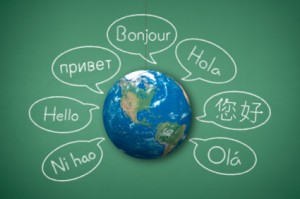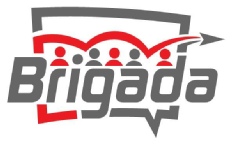 Last week, a friend put me in touch with the ongoing development in the GPA language learning approach. I believe Greg Thomson was one of the (if not THE) person to coin this term. Learn more at sites like…
Last week, a friend put me in touch with the ongoing development in the GPA language learning approach. I believe Greg Thomson was one of the (if not THE) person to coin this term. Learn more at sites like…
http://growingparticipatorapproach.wordpress.com/
I don’t think Thomson did this from the vantage point of someone working for the Kingdom, but this method seems to fit SOOO well with a Kingdom-friendly mindset. For my own part, I used the LAMP method. Prior to departure, I got to study directly under Tom and Betty Sue Brewster at Fuller in the LAMP heyday. (I never take that for granted, by the way.) For whatever reason, I loved the method and it really made sense to me. I used pure aural/oral LAMP for 9 hours/day, 6 days/week for entire 9 months straight. At that point, I could lay aside full-time language learning and focus full-time on outreach (which was, at that point, merely a ramping up of what LAMP had modeled for me). The fun part about LAMP was – it wouldn’t have mattered what language I was learning. Nor would it have mattered if it was tonal or not. I didn’t really focus on reading/writing that much — so for all I know, Spanish might have been scripted in Cyrillic. It didn’t matter. I was memorizing phrases like one memorizes opera. I met with a helper to figure out 4 new phrases or sentences per day (the Brewsters called them “texts” and they called this process “Get”), then had him record the text in several unique ways. Then I listened (passively at first, then more actively) to the new text for 30 minutes. Then I worked with the recordings (as prescribed by the Brewsters) for 2 1/2 hours (“Learn”). After eating lunch, I’d take off into the community. The Brewsters had told me not to quit until I had been able to say the text to 50 different people (“Use”). I was nearly religious about it. They all took me so seriously, trying to develop my pronunciation and flow. At quitting time (never before 5pm [grin]), I would figure out what I needed to learn for the next day (“Evaluate” – so Get, Learn, Use and Evaluate spelled “GLUE”). To this day, 32 years later, when I speak Spanish, thanks to the Brewsters (not through anything I did), someone in the room asks inevitably asks me if I’m from Argentina. (Never mind that I studied in Uruguay; at least they have me pegged in the country next door.) I haven’t been able to LIVE in Spanish since 1982. But for some reason, give me 1 day back in a Spanish-speaking location and it’s all there again. How does LAMP do that?
So I have questions:
*** How is GPA different/better/worse than LAMP? What are the bullet points of how it’s unique?
*** Have you done LAMP and did it work for you? Have you tried GPA and was it easier or harder?
*** For you, how do these methods compare to using tutors or studying in a language class?
If you would be so kind, please respond by logging on to the web version of this edition (see link below), then click “Comment.” Thanks in advance!












I have used LAMP to learn two languages: Portuguese (in combination with conventional methods), and Kimwani (undocumented tonal tribal language in Mozambique).
The downfall of LAMP for my wife and I was that people had the opposite reaction than you wrote: they started ridiculing us every day. Kids would follow us and laugh when we said the same thing over and over again. I have since spoken to other missionaries who had a remarkably similar experience elsewhere in Africa, and others in Asia.
GPA focusses on listening and understanding before trying to speak. It is easier to memorise this way: you associate phrases with pictures or actions. This reduces your accent when you do start to speak, as you have heard the language so often you immediately hear your own mistakes. This takes more effort with LAMP, but works: I reportedly did not have a strong accent.
Big plus of GPA is that you don’t make your cultural mistakes with 50 people – in the beginning at least you spend most time with your language helper, then you gradually branch out to more people.
LAMP was an important development in language learning techniques, and GPA has had the advantage of being able to build on it.
First, GPA is Greg Thomson’s “baby”. Second, it was developed from a Kingdom perspective — they currently serve in Central Asia. Greg has incorporated ideas and principles from other approaches — Total Physical Response is quite prominent; while Greg may not use the acronym, “GLUE”, the learner still does the all the steps. Most of our personnel who have use the GP Approach are **VERY** excited about and pleased with the results.
I’m familiar with FSI, LAMP, Barefoot, TPR, Community, and other approaches. A few bullet point characteristics of GPA:
• Gets outsiders involved in the community for culture and language acquisition quickly after the listening phase, thus the name, “Growing Participator”.
• Recognizes and incorporates the concept that language and culture acquisition (becoming a community participator) is a lifelong process.
• Attempts to mimic the natural way that people learn language, though taking advantage of already acquired learning skills of an adult. The first phase is a listen-and-respond (physically, not verbally) phase that helps (forces?) the learner to hear the language over and over before speaking. If one speaks too soon, then one tends to use one’s own native language sounds rather than the sounds of the new language.
• GPA uses a language nurturer instead of a tutor or teacher. The difference is more than semantics — the nurturer doesn’t teach grammar (at least not until much later) or have the learner memorize a bunch of vocabulary. Instead, the learner gains language and culture skill in a more natural way, avoiding having to constantly refer to a mental “grammar chart”.
Here’s another community and relationship culture/language acquisition program that makes use of TPR and other familiar strategies and is proving to be very effective in a wide range of contexts. Becoming Equipped to Communicate (BEC). Download a free copy here; http://bit.ly/1ohLAKM
Right up front: I’m a prefield trainer for GPA (Workshops and individual training) and coach for GPA participators on the field.
I’ve been through the training that Greg developed twice. (2004, 2014) The training has continued to grow and build on both new research and practical experience for over a decade.
At the most recent training, there were 6-7 trainers for a variety of input.
Each Phase uses different techniques and tools to build on the previous phases for a deeper level of language.
Each Phase has a manual and additional resources.
Phase 1A & 1B each have a manual that outlines activities with directions and materials to gather. The activities build on previous activities – reusing vocabulary in new ways and with new vocabulary. These two manuals cover about 100 hours of activities. (Helpful for a new language learner who is trying to figure out what they want to do when.)